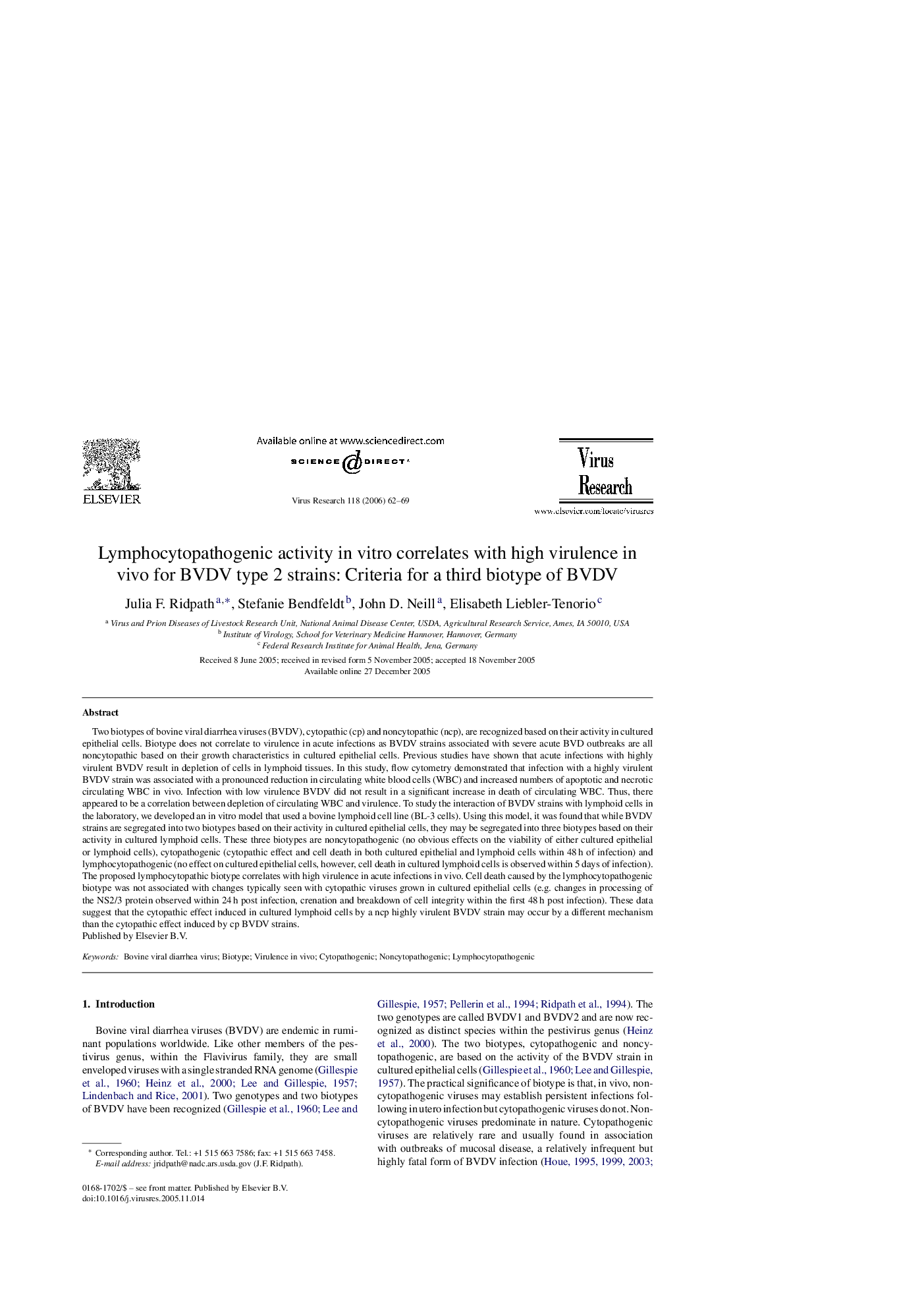| Article ID | Journal | Published Year | Pages | File Type |
|---|---|---|---|---|
| 3431340 | Virus Research | 2006 | 8 Pages |
Two biotypes of bovine viral diarrhea viruses (BVDV), cytopathic (cp) and noncytopathic (ncp), are recognized based on their activity in cultured epithelial cells. Biotype does not correlate to virulence in acute infections as BVDV strains associated with severe acute BVD outbreaks are all noncytopathic based on their growth characteristics in cultured epithelial cells. Previous studies have shown that acute infections with highly virulent BVDV result in depletion of cells in lymphoid tissues. In this study, flow cytometry demonstrated that infection with a highly virulent BVDV strain was associated with a pronounced reduction in circulating white blood cells (WBC) and increased numbers of apoptotic and necrotic circulating WBC in vivo. Infection with low virulence BVDV did not result in a significant increase in death of circulating WBC. Thus, there appeared to be a correlation between depletion of circulating WBC and virulence. To study the interaction of BVDV strains with lymphoid cells in the laboratory, we developed an in vitro model that used a bovine lymphoid cell line (BL-3 cells). Using this model, it was found that while BVDV strains are segregated into two biotypes based on their activity in cultured epithelial cells, they may be segregated into three biotypes based on their activity in cultured lymphoid cells. These three biotypes are noncytopathogenic (no obvious effects on the viability of either cultured epithelial or lymphoid cells), cytopathogenic (cytopathic effect and cell death in both cultured epithelial and lymphoid cells within 48 h of infection) and lymphocytopathogenic (no effect on cultured epithelial cells, however, cell death in cultured lymphoid cells is observed within 5 days of infection). The proposed lymphocytopathic biotype correlates with high virulence in acute infections in vivo. Cell death caused by the lymphocytopathogenic biotype was not associated with changes typically seen with cytopathic viruses grown in cultured epithelial cells (e.g. changes in processing of the NS2/3 protein observed within 24 h post infection, crenation and breakdown of cell integrity within the first 48 h post infection). These data suggest that the cytopathic effect induced in cultured lymphoid cells by a ncp highly virulent BVDV strain may occur by a different mechanism than the cytopathic effect induced by cp BVDV strains.
